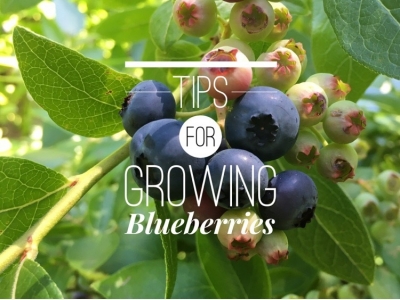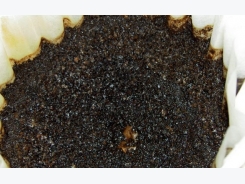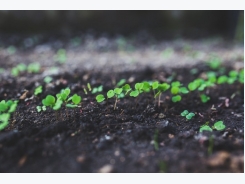Growing Blueberry Bushes: Tips for Success

Ready to grow your own blueberries? These tips will help you grow great blueberry bushes.
WHERE TO PLANT BLUEBERRY BUSHES
Blueberries are a very rewarding shrub to grow at home, and will produce buckets of fresh blueberries each summer under the right conditions. Location is extremely important for good blueberry picking. Blueberry bushes like full sun with well-drained soil. They are often found growing wild in sandy areas, which are best suited to the shrubs.
You may be lucky enough to have good blueberry-growing conditions in your yard or property already, but look around before planting: you don’t want them near existing wild blueberries. Not only will they compete for resources, but they are also likely to cross-pollinate, resulting in smaller berries on your plants. Another consideration will be cold-hardiness.
Wild blueberries grow in cold climates with early and late frosts, but cultivated blueberries won’t be able to produce as much fruit in shorter growing seasons, so maximum production comes in more moderate climates.
SOIL FOR GROWING BLUEBERRIES
Blueberry bushes like very acidic soil, and will grow in soils that are downright inhospitable to other plants. Sandy, acidic soils in a pH range of 4.0 to 5.0 are best. Test your soil’s pH before planting, and if it is below 7.0 to start, it will be possible to add sulfur, peat or other acidic soil amendments to get it to a good pH for blueberries. If your soil is above 7.0, find a new spot to plant, as it will be impractical to bring the pH down far enough.
Aerate soil thoroughly by digging it up and thinning it out with sand, leaf mold, sawdust, or peat moss.

POLLINATING BLUEBERRY BUSHES
For the best blueberry yield, the bushes should be pollinated thoroughly. If you are worried about natural pollinators, you can help to attract birds, bees and butterflies to the area with birdfeeders, insect feeders or attractive plantings with brightly colored flowers and sweet nectars. To be sure of good cross-pollination among your bushes, be sure to plant two cultivars of blueberries that are well-suited to your local climate.
In Northern areas, Chippewa, Northblue, Northcountry and Polaris are good blueberry strains to choose from. Most home gardeners choose highbush varieties of blueberry bushes, but lowbush blueberries may suit your garden or yard better. Cultivars suited to more temperate climates with longer growing seasons include Jersey, Nelson or Blue Gold.
SEASONAL CARE FOR BLUEBERRY BUSHES
Pick the flowers off the blueberry bushes, preventing them from fruiting, for the first two summers. This forces the bush to put its energy into growing strong enough to give good fruit crops in following years.
After two years, begin to prune in the winter or early spring to encourage best growth. Berries are produced on one-year-old wood, so cutting the blueberry bushes back each year helps fruit production.
If you have lowbush blueberries, you can use a lawnmower to cut them back in the winter, when the plants are dormant. Prune any weak, old, diseased or dying stems, and cut off several of the larger, older shoots evenly around the bush. When the bushes begin to bud in the spring, mulch around the base with a light layer of mulch, and apply an acid-producing fertilizer such as for azaleas.
Stop fertilizing after blooms mature, and prepare for berries by netting the bushes. This will protect the juicy berries from attack by birds. Netting supported by a light frame is best, with the netting well-secured so birds can’t get in. Rabbits and deer also like blueberries. A high chicken-wire fence will help keep these away.
Once the berries have been harvested for the year, get the bushes ready for fall by mulching again to protect the plants, and stop watering to allow them to go dormant for the winter.

Related news
Tools

Phối trộn thức ăn chăn nuôi

Pha dung dịch thủy canh

Định mức cho tôm ăn

Phối trộn phân bón NPK

Xác định tỷ lệ tôm sống

Chuyển đổi đơn vị phân bón

Xác định công suất sục khí

Chuyển đổi đơn vị tôm

Tính diện tích nhà kính

Tính thể tích ao




 How to Grow Garlic
How to Grow Garlic  How to Water Seeds and Seedlings
How to Water Seeds and Seedlings